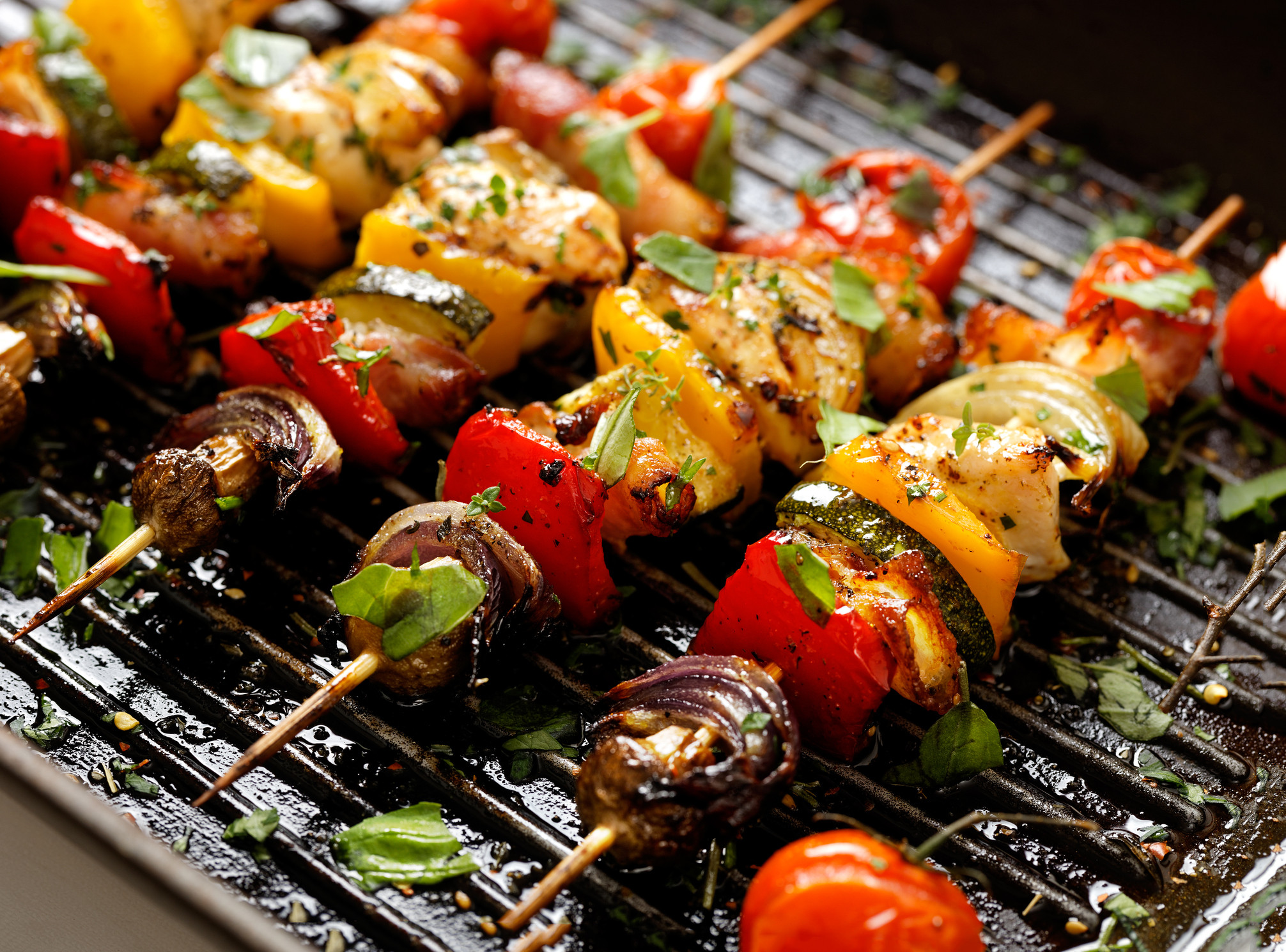
Key facts
- Defrost and marinate foods in the fridge, especially meats.
- Separate raw and cooked food and use different equipment and utensils for each.
- Do not eat meat such as chicken, mince or sausages that looks raw or pink inside.
- The germs that cause food poisoning can be killed by cooking foods at correct temperatures.
What are barbeque food safety risks?
Barbecuing food can lead to food poisoning if it is not done correctly. Food poisoning is usually mild and most people get better within a week. However, sometimes it can be more severe, even deadly; so it’s important to take the risks seriously.
Summertime is a great time to get together to share a meal, but it is also a time when food poisoning cases increase because of warmer temperatures. When cooking on the barbecue, there are 2 main risk factors for food poisoning:
- undercooked meat
- spreading germs from raw meat onto food that’s ready to eat
Raw or undercooked meat can contain germs that cause food poisoning, such as salmonella, E. coli, campylobacter and listeria.
These germs however can be killed by cooking meat until it is very hot throughout.
Cooking meat on a barbecue
When you’re cooking any kind of meat on a barbecue, such as poultry (chicken or turkey), pork, steak, burgers or sausages, make sure:
- food is stored in a cool place until you are ready to cook it
- frozen meat is properly thawed before you cook it
- you turn the meat regularly and move it around the barbecue to cook it evenly
- if you are using a charcoal barbecue, coals are glowing red with a powdery grey surface before you start cooking, as this means that they’re hot enough
Remember that meat such as mince, sausages and chicken is safe to eat only when:
- it is piping hot in the centre
- there is no pink meat
- juices are clear
Some meat, such as steaks and joints of beef or lamb can be served rare (not cooked in the middle) as long as the outside has been properly cooked. This will kill any bacteria that might be on the outside of the meat.
A meat thermometer can be helpful. Correct temperatures for common barbecue foods are:
- 74°C for chicken and turkey — whole or thighs, wings, legs and breasts
- 71°C for minced meat and sausages
- 63°C for fish
How should I handle raw meat?
Germs from raw meat can move easily onto your hands and then anything else you touch, including food that is cooked and ready to eat. This is called ‘cross-contamination’.
Barbecues are often the cause of cross-contamination. When raw meat juices mix with cooked or ready-to-eat food this can lead to food poisoning.
Here are some tips to avoid cross-contamination:
- Do not put cooked chicken or meat back on the same plate that contains raw juices — make sure you have plenty of clean utensils and platters.
- Do not pour liquid that has been used to marinate raw meat or poultry on to cooked meats.
- Store uncooked food and ready-to-eat food in separate sealed containers and keep them cold during transport to the barbecue.
- Always wash your hands after touching raw meat.
- Use separate utensils (such as plates, tongs and containers) for cooked and raw meat.
Keeping food cool
It’s important to keep some foods cool to prevent food poisoning germs multiplying.
Make sure you keep the following high risk foods cool:
- salads
- dips
- milk, cream and yoghurt
- desserts and cream cakes
- sandwiches
- ham and other cooked meats
- cooked rice, including rice salads
Make sure eskies are packed with enough ice/coolant to keep foods chilled.
Always keep raw meats cold and don’t leave cooked foods and salads out in the sun for more than 2 hours. Bacteria can multiply quickly in warm to hot temperatures and cause food poisoning. If meats cooked on the barbecue are to be eaten later, make sure they are kept cold for transport back home and then put immediately into the refrigerator.
Preventing the spread of germs
If you are not feeling well (for example, if you have symptoms like diarrhoea, vomiting, fever, sore throat, jaundice or a skin infection), avoid handling food or consider postponing your barbecue. If symptoms continue, see your doctor.
Barbecuing safely
Make sure your barbecue is steady on a flat surface, away from plants and trees. Cover the bottom of your barbecue with coal to a depth of no more than 5cm. Use only recognised firelighters or starter fuel and only on cold coals.
If you have a gas barbecue, ensure that your barbecue is serviced and maintained correctly, including scheduled pressure testing of gas cylinders and checking the condition of hoses and connections. Check the cylinder for rust or damage and ensure any connections are correctly tightened on gas barbecues before lighting.
The following checklist can help you have a safe barbeque:
- Always have a garden hose or similar continuous supply of water available.
- Follow the manufacturer’s instructions and use the correct start-up and shut-down procedures.
- Only use a barbecue in a well ventilated area as fumes and gases may be harmful.
- Never use petrol on a barbecue.
- If a gas leak happens, shut off the cylinder immediately and keep people away until the area is free from gas.
- Consider having a fire extinguisher or fire blanket nearby for emergencies.


